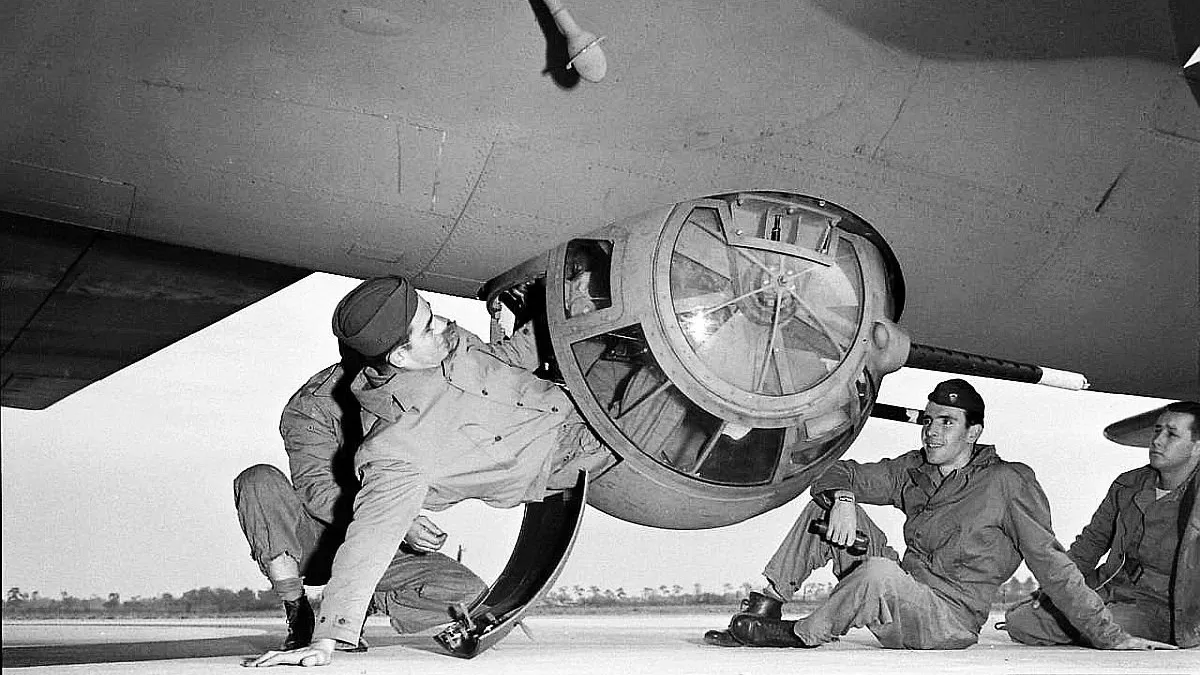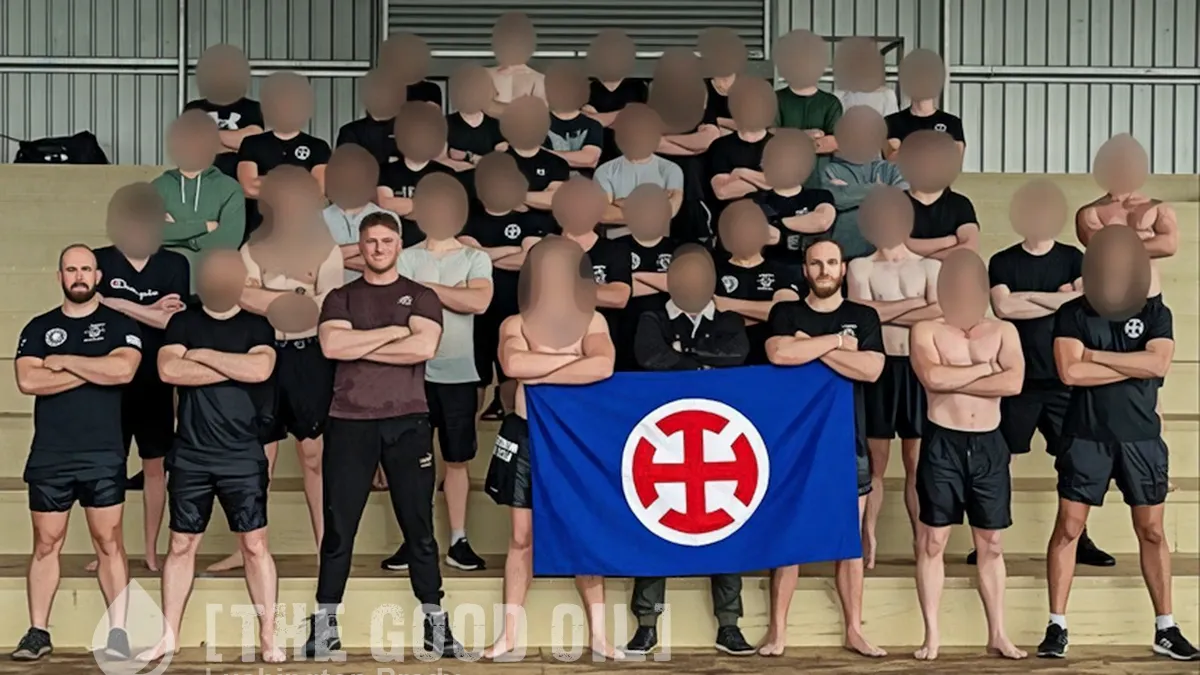Table of Contents
WWII was the deadliest conflict in human history. Within that haemoclysm, as it’s been dubbed, there were some jobs that were infinitely more deadly than others. An Italian partisan, for instance, had a slightly less than even chance of being killed, while over one third of the Waffen-SS were killed. In the deadly maelstrom of the Eastern Front, both the Russian and German armies had a similar death rate, at just over 30 per cent.
Another particularly deadly theatre was the air war over Europe. Bomber Command, in particular, suffered horrific losses.
And the worst job in a WWII bomber was a ball-turret gunner.
During World War Two, there were no fancy radars, electronic warfare suites, and stealth technology standards on modern bomber self-defense systems.
Back then, bombers protected themselves with numerous .50 caliber machine guns crewed by multiple gunners. Gunners comprised about half the crew of each bomber, with other members being able to fire back if needed.
During the early part of the war, bombers were covered with a tail gunner. There were also two gunners on the side, also known as waist gunners. There was additional personnel like the radio man or flight engineer who could also access a machine gun mount. But there was just one problem.
You’ve probably already spotted it: the underside of a bomber was completely unprotected.
American engineers quickly fixed this problem by adding a retractable ball turret to the underbelly of most American bombers. The ball turret was only four feet in diameter.
The turret would be lowered and raised via a combined electro-hydraulic system once in flight. This system could be activated by the pilots remotely. In an emergency, such as a loss of power or battle damage, the waist gunners could retract the turret manually if there was time.
Inside the mount were two .50 caliber machine guns with a K-4 Sperry gun sight. These machine guns were modified versions of the infamous M2 machine guns in use in the Army and Navy. Feeding these beasts were approximately 1000 rounds of ammunition among both guns.
Naturally, given the confined space, a ball-turret gunner had to be on the small side. Especially if they were going to leave room for their massive balls of steel. Hanging suspended in a tiny glass ball under a bomber thousands of feet in the air, with shrapnel and tracer fire filling the sky around you, was not a job for the fainthearted. Still, there were some six-footers in the ball turrets.
After intensive training, including with some of the first rudimentary flight simulators, ball-turret gunners were thrown into the infinitely more intense reality of air war over Europe and the Pacific, where enemy planes were not the only thing that could kill you.
Temperatures at the altitudes bombers fought at could range from -10 to -70 degrees Fahrenheit. At such extreme temperatures, the heated suits bombers wore were crucial.
However, many ball turret gunners complained these did not always work well, or if the turret lost power, the electricity feeding the suit was cut. This would often make dangerous situations for the gunner where they would have to extricate themselves or freeze to death.
Many veteran gunners said they would need their crew members to help pull them out after long missions since they had been semi-frozen in the turret.
Another way that gunners would face danger was by running out of oxygen. While there was plenty of emergency oxygen inside the main cabin, if a gunner’s oxygen supply ran out or was damaged, the only way for his crew to know would be to be attentive enough to see the turret stop moving around for a while. This is because the intercom system was prone to failure.
While communications with the rest of the crew were limited, ball-turret gunners at least had a bird’s eye view of the battle below them. Provided, of course, that the tubes they used to relieve themselves didn’t end up spraying a layer of frozen piss on the outside of the turret. Some took to peeing in cans and throwing them out through a hole cut in the turret.
Ball turret gunners also had to carefully conserve ammunition, being unable to reload in flight.
If their plane was hit, they were in even more trouble than the rest of the aircrew.
While some gunners were small enough to wear their parachutes in the turret, most left their chutes in the main cabin. If the crew had to bail out, the ball turret gunner would hope to have enough time and strength to crawl out of the turret, grab his chute, and jump. Because of this long process, the ball turret gunner was often the last man out, if he got out at all.
Even if a damaged plane survived to ditch or make a forced landing, the ball-turret gunners were often out of luck, no matter what.
Because a ditched aircraft meant that it lost power or took severe damage, the ball turret might be impossible to retract.
In these cases, the airman would be crushed. Numerous ball turret gunners related that this happened frequently enough to be a real possibility.
History Defined
For all its dangers, though, thousands of men, like their fellow aircrew, chose to fight. At least they had a great view. While it lasted.








